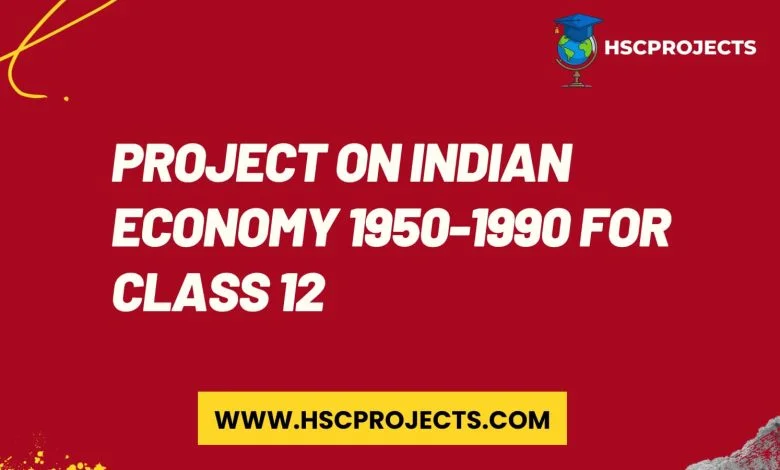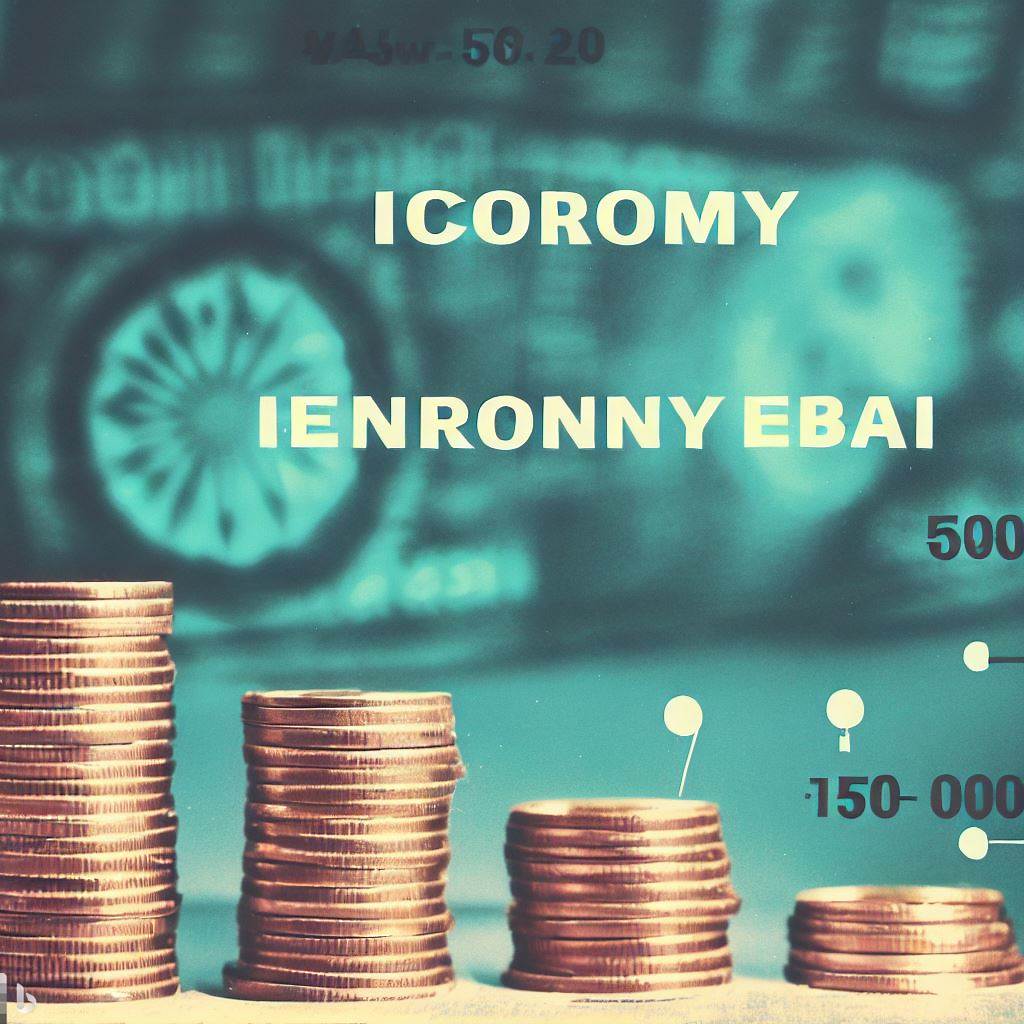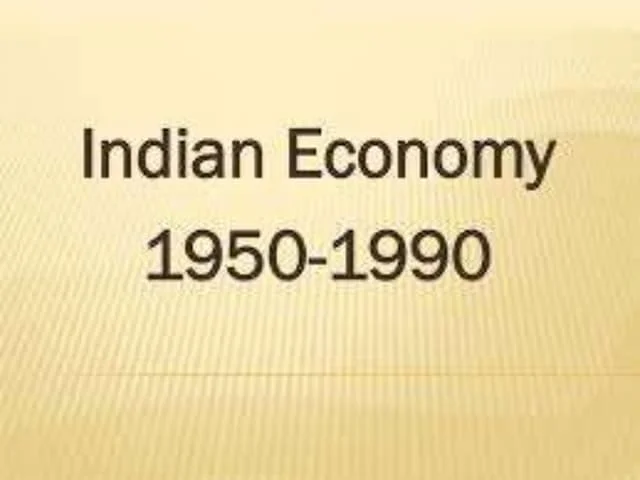
Project On Indian Economy 1950-1990 For Class 12
Acknowledgement:
I would like to extend my heartfelt gratitude to the individuals who have played a significant role in the completion of this project on the Indian Economy from 1950 to 1990. Their unwavering support, guidance, and encouragement have been instrumental in making this endeavor a success.
Firstly, I am deeply indebted to my teacher, [Teacher’s Name], whose expertise and profound knowledge in the field of economics have been instrumental in shaping my understanding of the subject matter. Their constant guidance, valuable insights, and constructive feedback have greatly enhanced the quality of this project.
I would also like to express my gratitude to my parents for their unwavering support and encouragement throughout this project. Their belief in my abilities, motivation, and willingness to provide resources and assistance whenever needed have been invaluable. Their constant encouragement has been the driving force behind my perseverance and dedication.
Additionally, I would like to acknowledge the contribution of my classmates and friends who have provided valuable inputs and engaged in insightful discussions, enriching the project further. Their collaborative efforts have fostered an environment of shared learning and growth.
I am also grateful to the authors, researchers, and economists whose insightful works and research papers have served as a foundation for this project. Their contributions have allowed me to delve deeper into the subject matter and gain a comprehensive understanding of the Indian economy during the specified period.
Lastly, I would like to extend my appreciation to the administrators and staff of the library, both at my school and local community, for providing access to a vast array of resources and reference materials. Their efforts have been pivotal in facilitating my research and ensuring the accuracy and reliability of the information presented in this project.
In conclusion, I am deeply grateful to all the individuals mentioned above, as well as anyone else who has directly or indirectly contributed to the successful completion of this project. Their unwavering support, guidance, and encouragement have played a vital role in my academic journey and the realization of this project on the Indian Economy from 1950 to 1990.
Introduction:
The period from 1950 to 1990 holds immense significance in the history of the Indian economy. It marked the early years of India’s independence and witnessed a series of economic policies and reforms that shaped the country’s trajectory. This project aims to delve into the intricacies of the Indian economy during this period, exploring its key aspects, policies, and outcomes.
During this era, India faced numerous challenges as a newly independent nation striving for economic development. The Indian government embarked on a path of planned economic development, emphasizing self-sufficiency and equitable growth. The project will shed light on the policies and strategies adopted by the Indian government to overcome these challenges and foster economic progress.
Understanding the key aspects of the Indian economy during this period is crucial to comprehend the factors that influenced its growth and development. The project will explore various sectors such as agriculture, industry, trade, and services, highlighting their contributions to the overall economy.
Moreover, the project aims to examine the economic policies implemented during this period, such as import substitution industrialization (ISI), which aimed to promote domestic industries and reduce reliance on imports. It will analyze the impact of these policies on the manufacturing sector, employment generation, and economic growth.
Additionally, the project will delve into the agricultural reforms undertaken during this time, including the Green Revolution and land reforms. These initiatives aimed to boost agricultural productivity, ensure food security, and uplift rural communities. Analyzing their outcomes will provide insights into the transformation of the agrarian sector.
Furthermore, the project will explore the significance of the Five-Year Plans, the planning process adopted by the Indian government to guide economic development. It will examine the objectives and outcomes of each plan, with a focus on sectors such as infrastructure, education, and healthcare. This analysis will highlight the role of planned interventions in shaping the Indian economy.
By gaining a comprehensive understanding of the Indian economy from 1950 to 1990, we can evaluate the successes and challenges faced during this transformative period. This knowledge will enable us to appreciate the foundations laid for future economic reforms and development. Furthermore, it will provide insights into the economic decisions that have shaped India’s current economic landscape.
In conclusion, this project aims to provide a comprehensive overview of the Indian economy from 1950 to 1990. By examining its key aspects, policies, and outcomes, we can develop a deeper understanding of the challenges faced and the remarkable achievements made during this transformative era. Through this exploration, we can gain valuable insights that contribute to our understanding of India’s economic journey and its implications for the present and future.

Importance of Studying Indian Economy 1950-1990:
Studying the Indian economy from 1950 to 1990 holds immense importance for a multitude of reasons. This period marks a crucial phase in India’s history, characterized by significant economic policy shifts and ambitious development strategies. Exploring this period allows us to gain valuable insights into the challenges, achievements, and the overall trajectory of India’s economy during its formative years.
Firstly, studying the Indian economy from 1950 to 1990 is essential because it corresponds to the early years of India’s independence. Following India’s freedom from British colonial rule in 1947, the country embarked on a path of nation-building and economic development. This period witnessed the formulation and implementation of fundamental economic policies and reforms that laid the foundation for subsequent decades. Understanding these policies and their historical context is crucial to comprehend the factors that influenced India’s economic growth and development.
Secondly, the study of this period helps highlight the challenges faced by a newly independent nation striving for economic progress. India confronted numerous hurdles, including widespread poverty, low industrialization, inadequate infrastructure, and limited technological capabilities. Examining the strategies employed to tackle these challenges provides valuable insights into the complexities of nation-building and the unique context in which economic policies were designed and implemented.
Moreover, studying the Indian economy from 1950 to 1990 allows us to analyze the impact of various policies and reforms on the country’s growth and development. During this period, India adopted an economic model that emphasized self-sufficiency and planned development. It witnessed the implementation of policies such as import substitution industrialization (ISI), the Green Revolution in agriculture, and the Five-Year Plans. By critically analyzing the outcomes of these policies, we can evaluate their effectiveness, strengths, and limitations. This evaluation provides valuable lessons and perspectives for policymakers, economists, and researchers to inform future economic strategies and decision-making.
Additionally, the study of this period helps in understanding the socio-economic implications of the economic policies pursued. It allows us to assess the impact of these policies on poverty alleviation, income distribution, employment generation, and social welfare. Analyzing the successes and challenges of this period provides valuable insights into the linkages between economic development, social progress, and inclusive growth.
In conclusion, studying the Indian economy from 1950 to 1990 is of utmost importance as it corresponds to India’s early years of independence, highlights the challenges faced by a developing nation, and enables an analysis of the impact of policies and reforms on the country’s growth and development. By understanding this critical period, we can gain valuable insights into India’s economic journey, inform policy decisions, and learn from the successes and challenges encountered during this transformative era.

How Can We Make It Happen?
To effectively study the Indian economy from 1950 to 1990, it is important to adopt a comprehensive approach. The following steps can be taken to make this project successful:
Research: Collect data, statistics, and information from reliable sources such as books, government publications, research papers, and reputable websites.
Analysis: Analyze the collected data to understand the trends, challenges, and achievements of the Indian economy during the specified period.
Case Studies: Include case studies of significant events, policies, and reforms that had a profound impact on the Indian economy during this period.
Interviews: Conduct interviews with experts, economists, or individuals who experienced or studied the Indian economy during the given period. Their insights will provide valuable perspectives.
Visual Representation: Utilize charts, graphs, and infographics to present data and statistics effectively, enhancing the understanding and visual appeal of the project.
Three Pillars of Indian Economy 1950-1990:
The Indian economy during the period of 1950 to 1990 can be understood through three key pillars:
Import Substitution Industrialization (ISI): Explore the policy of promoting domestic industries and reducing dependence on imports, its impact on the manufacturing sector, and the challenges faced.
Agricultural Reforms: Discuss the Green Revolution, land reforms, and their effects on agricultural productivity, food security, and rural development.
Five-Year Plans: Examine the planning process, objectives, and outcomes of the Five-Year Plans implemented during this period, focusing on sectors like infrastructure, education, and healthcare.

Conclusion:
The period from 1950 to 1990 holds immense significance in the economic history of India. It was a time of remarkable growth, as well as challenges and policy initiatives that shaped the trajectory of the Indian economy. This project aimed to provide an overview of this crucial period, highlighting the importance of studying the Indian economy from 1950 to 1990.
By adopting a comprehensive approach to studying this period, including analyzing data, conducting case studies, and exploring the three pillars of import substitution industrialization (ISI), agricultural reforms, and the Five-Year Plans, we can gain valuable insights into the factors that influenced India’s economic development during this transformative era.
Through data analysis, we can uncover trends, patterns, and key indicators of economic growth and performance. By examining case studies of significant events, policies, and reforms, we can gain a deeper understanding of their impact on various sectors and the overall economy. Exploring the three pillars helps us grasp the intricacies of the economic policies and strategies pursued during this period.
Studying the Indian economy from 1950 to 1990 provides valuable lessons and insights for policymakers, economists, and researchers. It allows us to understand the successes and challenges faced by a newly independent nation striving for economic development. The analysis of policies and reforms helps us assess their effectiveness, strengths, and limitations, enabling us to learn from past experiences and inform future decision-making.
Moreover, studying this period helps us appreciate the foundations laid for subsequent economic reforms and development in India. It provides a historical context for understanding the country’s present economic landscape and the evolution of its economic policies and strategies.
In conclusion, the Indian economy from 1950 to 1990 witnessed remarkable growth, challenges, and policy initiatives that shaped its trajectory. This project aimed to provide an overview of this crucial period, emphasizing the importance of studying the Indian economy during this time. By adopting a comprehensive approach, analyzing data, including case studies, and exploring the three pillars, we can gain valuable insights into the factors that influenced India’s economic development during this transformative era. Through this understanding, we can learn from past experiences, inform policy decisions, and contribute to the continued growth and development of the Indian economy.
Certificate of Completion
[Student’s Name][Class/Grade Level]This is to certify that I, [Student’s Name], a [Class/Grade Level] student, have successfully completed the project on “Project On Indian Economy 1950-1990 For Class 12.” The project explores the fundamental principles and key aspects of the chosen topic, providing a comprehensive understanding of its significance and implications.
In this project, I delved into in-depth research and analysis, investigating various facets and relevant theories related to the chosen topic. I demonstrated dedication, diligence, and a high level of sincerity throughout the project’s completion.
Key Achievements:
Thoroughly researched and analyzed Project On Indian Economy 1950-1990 For Class 12.
Examined the historical background and evolution of the subject matter.
Explored the contributions of notable figures in the field.
Investigated the key theories and principles associated with the topic.
Discussed practical applications and real-world implications.
Considered critical viewpoints and alternative theories, fostering a well-rounded understanding.
This project has significantly enhanced my knowledge and critical thinking skills in the chosen field of study. It reflects my commitment to academic excellence and the pursuit of knowledge.
Date: [Date of Completion]Signature: [Your Signature] [School/Institution Name][Teacher’s/Examiner’s Name and Signature]
In order to download the PDF, You must follow on Youtube. Once done, Click on Submit
Follow On YoutubeSubscribed? Click on Confirm
Download Project On Indian Economy 1950-1990 For Class 12 PDF






